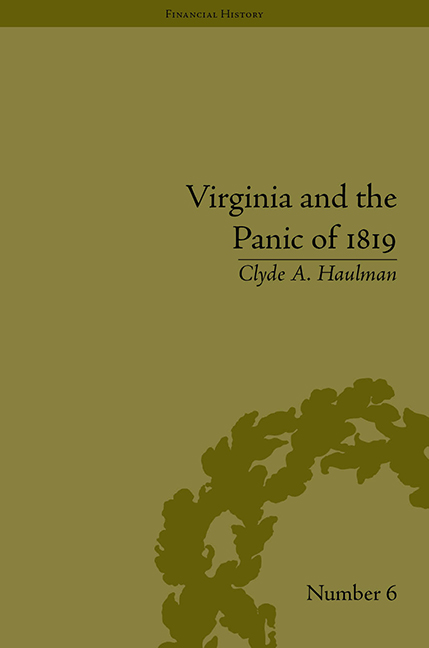Book contents
7 - The Aftermath of the Panic
Summary
Assessing the impact of the Panic of 1819 in Virginia, and even more so across the nation, is complicated by the confluence of events in that critical year. In addition to the economic crisis engendered by the Panic, the debate regarding federalism and states’ rights that influenced all political discussions of the day, and particularly those in Virginia, was exacerbated by three other incidents. The first of these ‘grew out of John C. Calhoun's attempt to recover through his cabinet position some of the internal improvement ground lost in the Bonus Bill veto’. Facing strong opposition led by Henry Clay, Calhoun's proposal was sharply debated in Congress, and while a compromise gave both sides something, the question of the federal role for internal improvements remained unresolved.
A second event in March of the watershed year 1819 was the Supreme Court's ruling in McCulloch v. Maryland. In addition to sustaining the Bank of the United States, Chief Justice John Marshall's decision operated to ‘enlarge federal power and enhance its instruments of economic development’ by reserving ‘almost nothing to the states except what was local and self-contained’ and gathering ‘under the umbrella of federal supremacy all things not prohibited by the Constitution’.
Finally, the second session of the fifteenth Congress began debate on the issue of admitting the Missouri territory to the Union. The debate actually concerned the sectional balance in Congress, and both sides, slave South and antislavery North, took increasingly hard stands that ended in a deadlock in March 1819. Returning for the sixteenth Congress, northern antislavery forces who had taken their case to the public ‘in the first American antislavery political campaign of its kind’ evoked strong southern reactions that produced a crisis. With exquisite political skill, compromisers led by Henry Clay found a way through the impasse and achieved the ‘immediate goal of pushing aside the slavery issue under a deceptive national truce so Americans could concentrate on even more pressing matters of economic survival’.
- Type
- Chapter
- Information
- Virginia and the Panic of 1819The First Great Depression and the Commonwealth, pp. 137 - 152Publisher: Pickering & ChattoFirst published in: 2014



